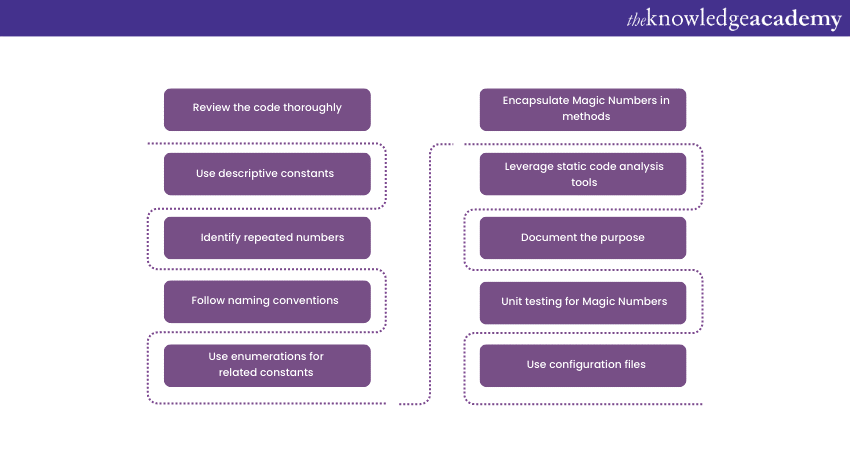We may not have the course you’re looking for. If you enquire or give us a call on 800969236 and speak to our training experts, we may still be able to help with your training requirements.
Training Outcomes Within Your Budget!
We ensure quality, budget-alignment, and timely delivery by our expert instructors.

In Java Programming, developers often encounter "Magic Numbers," which are numeric values used without clear context or explanations in the code. Magic Number in Java can create confusion and makes the codebase difficult to understand and maintain.
According to Statista, 30 per cent of the developers reported using Java, making it the seventh most popular programming language globally. If you are interested in becoming a developer in this domain, then understanding its challenges, like Magic Numbers, is vital. In this blog, you will learn What is a Magic Number in Java and how to find it with a proper example. Continue reading below to learn more!
Table of Contents
1) What is Magic Number in Java?
2) How to Find Magic Numbers in Java?
3) Example to find Java Magic Number
4) Conclusion
What is Magic Number in Java?
A Magic Number in Java refers to a numeric value that appears directly in the code without any explanation of its meaning. It lacks context and clarity, making the Java code harder to understand and maintain.
Instead of using raw numbers in Java, it's considered best practice to assign such values to named constants with descriptive names. This way, the purpose of the number becomes self-explanatory, enhancing the readability of the code.

How to find Magic Numbers in Java?
Magic Numbers in Java are numeric values used directly in the code without any clear explanation or context. They can make code difficult to understand, maintain, and modify in Java. Here are some effective methods to find and address Magic Numbers in Java:

1) Review the code thoroughly: Carefully examine the entire Java codebase, looking for numeric literals used without any accompanying comments or explanations. Magic Numbers in Java often appear as raw values without any context.
2) Use descriptive constants: Replace Magic Numbers in Java with named constants that have meaningful names. Java constants make the code more readable and provide clarity about the purpose of the numeric value.
3) Identify repeated numbers: Check for repeated numeric values throughout the Java code. If you find the same number used in multiple places, it's likely a magic number that should be replaced with a constant.
4) Follow naming conventions: Ensure that constants in Java are named following a consistent naming convention. This helps in identifying raw numbers that do not adhere to the standard naming pattern.
5) Use enumerations for related constants: If your Java program involves a set of related constants, use enumerations. Enumerations group related constants together, making the code more organised and self-explanatory.
6) Encapsulate Magic Numbers in methods: Create Java helper methods that encapsulate Magic Numbers. These methods should take raw numeric values as input and provide a meaningful output based on the context.
7) Leverage static code analysis tools: Utilise Java static code analysis tools like FindBugs, SonarQube, or PMD. These tools can automatically detect potential Magic Numbers and flag them for review.
8) Document the purpose: Always provide comments or documentation when defining constants to replace Magic Numbers. Describe the purpose and use of the constant to aid other developers in understanding the code.
9) Unit testing for Magic Numbers: Create unit tests that focus on scenarios where Magic Numbers in Java are used. Unit tests can help identify instances of Magic Number in Java and provide an opportunity for refactoring.
10) Use configuration files: In Java API, numbers may be subject to frequent changes or those that need different values for various environments. In such cases, consider storing them in external configuration files.
Finding and addressing Magic Numbers is essential for producing clean, maintainable, and robust Java code. By following these methods, developers can improve code readability, and reduce the likelihood of introducing bugs in Java. Moreover, it makes the Java codebase more manageable for future development and maintenance.
Unleash your coding potential in Java's dynamic landscape with our Java Programming Training. Sign up today!
Example to find Java Magic Number
In this section, you will learn how to identify Magic Numbers in Java with this concise example code. The "MagicNumber" class provides a method to determine whether a given integer is a magic number, showcasing the concept in action.
public class MagicNumber {
public static boolean isMagicNumber(int number) {
return (number - 1) % 9 == 0;
}
public static void main(String[] args) {
System.out.println(isMagicNumber(10001)); // true
System.out.println(isMagicNumber(12345)); // false
}
}
Embark on a transformative journey to become a skilled Java engineer with our Java Engineer Training. Sign up today!
Conclusion
We hope you read and understand Magic Numbers in Java. Addressing them is vital for writing clean, maintainable Java code. By using named constants, following conventions, and leveraging tools, Java developers can improve code readability and reduce potential bugs. This will enhance the overall code quality in Java.
Unlock the Java realm and master its hidden mysteries with our Java Training Courses. Sign up now!
Frequently Asked Questions
Upcoming Programming & DevOps Resources Batches & Dates
Date
 Java Programming
Java Programming
Mon 20th Jan 2025
Mon 3rd Mar 2025
Mon 12th May 2025
Mon 14th Jul 2025
Mon 22nd Sep 2025
Mon 17th Nov 2025







 Top Rated Course
Top Rated Course


 If you wish to make any changes to your course, please
If you wish to make any changes to your course, please


